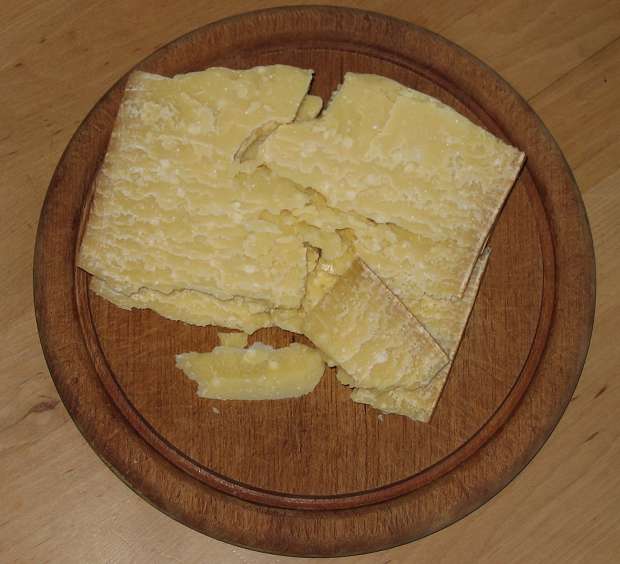Sbrinz on:
[Wikipedia]
[Google]
[Amazon]
Sbrinz is a very hard cheese produced in

 Sbrinz is commonly consumed in several ways: it can be grated, such as on pasta, or eaten in small pieces, often to accompany wine. Traditionally, Sbrinz is never cut, but grated, broken with a special cutter, or planed. It is also eaten in thin slices planed from the hard cheese. Sbrinz is often simply enjoyed with bread and butter.
Sbrinz is commonly consumed in several ways: it can be grated, such as on pasta, or eaten in small pieces, often to accompany wine. Traditionally, Sbrinz is never cut, but grated, broken with a special cutter, or planed. It is also eaten in thin slices planed from the hard cheese. Sbrinz is often simply enjoyed with bread and butter.
Official page
– in German, French, Italian and English. * {{Portal bar, Food, Switzerland Swiss cheeses Cow's-milk cheeses Culinary Heritage of Switzerland
Central Switzerland
Central Switzerland is the region of the Alpine Foothills geographically the heart and historically the origin of Switzerland, with the cantons of Uri, Schwyz, Obwalden, Nidwalden, Lucerne and Zug.
Central Switzerland is one of the NUTS 2 s ...
. It is often used as grated cheese in Swiss cuisine
Swiss cuisine (, , , ) is an ensemble of national, regional and local dishes, consisting of the ingredients, recipes and List of cooking techniques, cooking techniques developed in Switzerland or assimilated from other cultures, particularly ne ...
, although it is also eaten in small pieces. The cheese is produced in only 42 dairies in Central Switzerland. Only local cow's milk is used when producing this cheese. It is kept in the region until ready for consumption. It is the hardest of Swiss cheeses together with Berner Hobelkäse.
Sbrinz probably got its name from the town of Brienz in the Bernese Oberland
The Bernese Oberland (; ; ), sometimes also known as the Bernese Highlands, is the highest and southernmost part of the canton of Bern. It is one of the canton's five administrative regions (in which context it is referred to as ''Oberland'' witho ...
. In the 16th and 17th centuries, there was a collecting point for both cheeses from the Oberland and Central Switzerland. Most of the cheese was then transported from there across the Alps. Customers in northern Italy soon named the cheese "Sbrinz" after this place. The term then also became common in Switzerland. A second explanation is based on the adoption of the Lombard dialect word "sbrinzo", a term for hard cheese.
Character
Sbrinz is an extra hard full fat cheese. It contains approximately 40% to 45% of fat when dry. The cheese must ripen for 16 months before it can be sold as Sbrinz, and the full flavour only develops after about 24–30 months in storage.History
Sbrinz is one of the oldest European cheeses. The Celtic ancestors of the Swiss were making cheese centuries before the birth of Christ. In the first century AD, Roman writer Columella (orPliny the Elder
Gaius Plinius Secundus (AD 23/24 79), known in English as Pliny the Elder ( ), was a Roman Empire, Roman author, Natural history, naturalist, and naval and army commander of the early Roman Empire, and a friend of the Roman emperor, emperor Vesp ...
) mentions in his writings ''Caseus Helveticus'', which is probably Sbrinz. It seems certain, however, that it is mentioned in documents dating from 1530, which are kept in the state archive in Bern
Bern (), or Berne (), ; ; ; . is the ''de facto'' Capital city, capital of Switzerland, referred to as the "federal city".; ; ; . According to the Swiss constitution, the Swiss Confederation intentionally has no "capital", but Bern has gov ...
.
Starting in 2001, Sbrinz was granted an ''appellation d'origine contrôlée'' (AOC) certification. The AOC provides specifications for the origin of the milk and the processes that must be followed in order for the cheese to be labeled as Sbrinz. In 2013, this was replaced by the ''appellation d'origine protégée'' (AOP) certification.

Consumption
 Sbrinz is commonly consumed in several ways: it can be grated, such as on pasta, or eaten in small pieces, often to accompany wine. Traditionally, Sbrinz is never cut, but grated, broken with a special cutter, or planed. It is also eaten in thin slices planed from the hard cheese. Sbrinz is often simply enjoyed with bread and butter.
Sbrinz is commonly consumed in several ways: it can be grated, such as on pasta, or eaten in small pieces, often to accompany wine. Traditionally, Sbrinz is never cut, but grated, broken with a special cutter, or planed. It is also eaten in thin slices planed from the hard cheese. Sbrinz is often simply enjoyed with bread and butter.
See also
* List of Swiss cheeses * Bergkäse * Culinary Heritage of SwitzerlandReferences
External links
Official page
– in German, French, Italian and English. * {{Portal bar, Food, Switzerland Swiss cheeses Cow's-milk cheeses Culinary Heritage of Switzerland